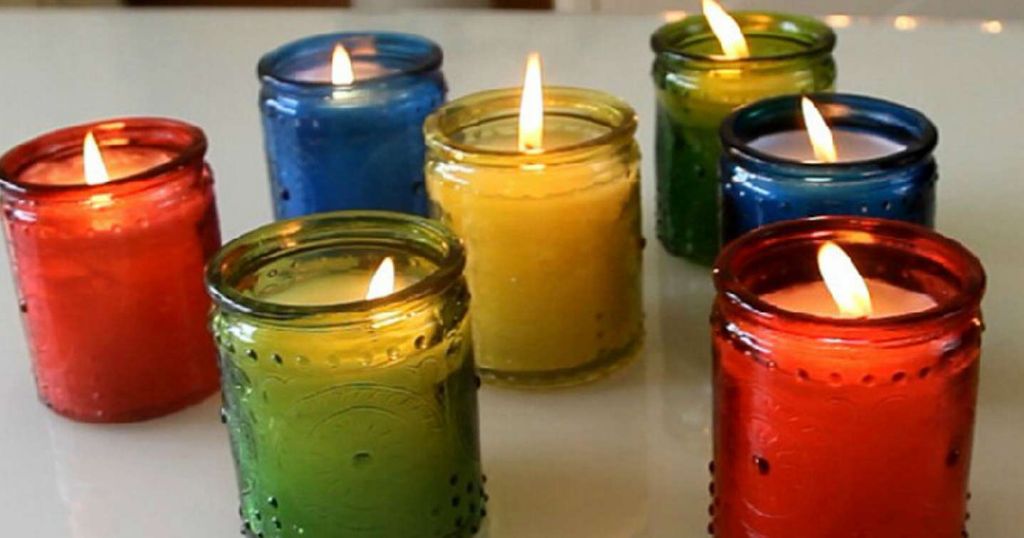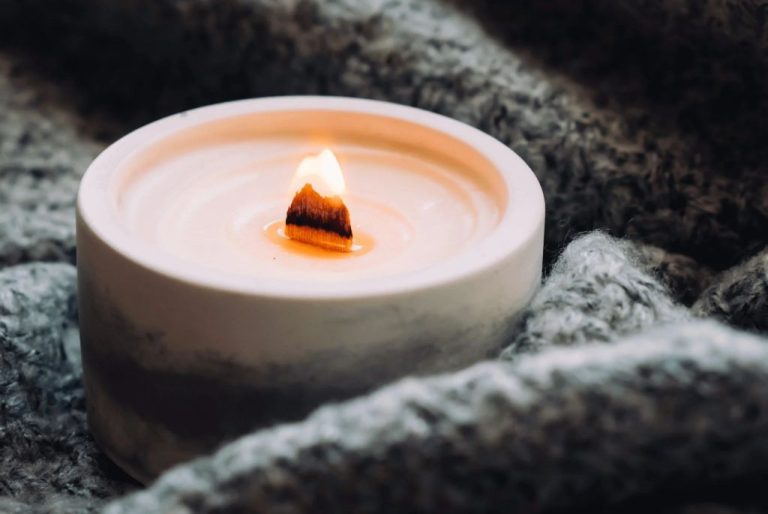What Oils To Put In Homemade Candles?
Candle making has seen a surge in popularity in recent years as more people discover the joys and benefits of making candles at home. Homemade candles allow you to fully customize your candle’s scent, color, and design. They also make great handmade gifts. The candle making process itself can be a fun and creative hobby. With just a few key supplies, you can start experimenting with different wax, wick, and fragrance oil combinations to create candles with your own personal touch.
Some of the reasons behind the rising popularity of homemade candle making include:
– Ability to personalize – you control the scent, color, shape and design
– Creativity – candle making allows you to express your creativity
– Cost savings – bulk supplies are inexpensive compared to finished candles
– Make great gifts – homemade candles are appreciated gifts for any occasion
– Relaxing hobby – the process is calming and rewarding
– Better quality ingredients – you can select high quality wax, wicks and oils
This guide will explore the different types of candle wax, wicks, fragrance oils, jars, and more so you can make informed choices when designing your own homemade candles. With a bit of knowledge and experimentation, you’ll be making beautiful, unique candles to enjoy yourself or share with lucky gift recipients.
Oils for Container Candles
Container candles like jar or tin candles require oils that are solid at room temperature. The most common oils used for container candles are:
Soy Wax

Pros:
- Made from soybeans so it’s a renewable resource
- Has a natural scent some find pleasant
- Relatively inexpensive
- Easy to work with
Cons:
- Doesn’t retain scent as well as other waxes
- Prone to frosting
- Can develop wet spots if overheated
Coconut Wax
Pros:
- Made from coconut oil so it’s natural and renewable
- Excellent scent throw
- Smooth finish with little frosting
- Clean burn with minimal soot
Cons:
- Expensive compared to other waxes
- Can be prone to cracking or morphing
- Brittle texture makes it hard to release from molds
Palm Wax
Pros:
- Vegan alternative to beeswax
- Hard finish resists frosting
- Good scent throw
- Relatively inexpensive
Cons:
- Harvest of palm oil contributes to deforestation
- Can develop wet spots if overheated
- Not as smooth or glossy as other waxes
Oils for Pillar Candles
Pillar candles often require oils with higher melting points that hold their shape in heat versus softer oils. Some of the top oils for pillar candles include:
- Beeswax – Beeswax has a high melting point of 144-147°F, which makes it ideal for pillar candles. It helps harden the candle and gives a smooth burn. Beeswax also has a natural honey aroma. (https://www.candlescience.com/essential-oil/beeswax/)
- Paraffin Wax – Paraffin wax is highly refined and has a high melting point of 130-150°F. This makes paraffin a good choice for stabilizing pillar candles. It’s odorless and inexpensive. (https://www.candlescience.com/essential-oil/paraffin-wax/)
- Palm Wax – With a melt point of 135°F, palm wax makes a nice natural alternative to paraffin in pillar candles. It gives a smooth finish and bright white color. (https://www.candlescience.com/essential-oil/palm-wax/)
While harder waxes like beeswax and paraffin give stability, you can also use small amounts of softer oils like coconut oil to modify properties like fragrance throw. Just don’t use too much or the pillar candle could lose its shape when burning. Experiment to find the right oil blend for the results you want.
Oils for Votive Candles
Votive candles typically use either paraffin or soy wax because these waxes have a low melting point that works well with the small size of votive candles. According to Candle Science, “Paraffin wax is the most commonly used candle wax. It’s inexpensive, easy to work with, and readily available” (source). Soy wax is also a popular choice because it burns cleanly and is made from a renewable resource.
Beeswax can also be used in votive candles to extend burn time. Beeswax has a higher melting point so it takes longer to pool out when lit. Adding some beeswax to paraffin or soy wax will increase the hardness of the wax and make it last longer. A blend of paraffin and beeswax or soy and beeswax is ideal for votives. House of Medicinals makes votive candles with a soy and coconut wax blend for a clean, even burn (source).
Oil Fragrance Options
When choosing a fragrance for homemade candles, the two main options are essential oils and fragrance oils. Both have their benefits and drawbacks.
Essential oils are extracted from plants and provide natural scents. Popular choices for candles include lavender, eucalyptus, lemon, and peppermint. The benefits of essential oils are that they come from natural ingredients and can provide aromatherapy effects. However, essential oils may fade more quickly or morph when burned (citrus scents in particular). They also can be more expensive than synthetic fragrance oils.
Fragrance oils are artificially created scents designed for candle making. An advantage is that fragrance oils hold their scent when burned and come in a huge variety of options from fruity smells to colognes. However, fragrance oils are chemically-based rather than natural. Certain oils may also discolor wax or clog wicks.[1]
Many candle makers prefer using a blend of essential oils and fragrance oils to balance cost, scent variety, and natural ingredients. Testing different oil combinations is key to achieving the perfect homemade candle scent.
Wick Types
The type of wick you choose for homemade candles is extremely important as it determines how the wax will melt and the candle will burn. Using the right wick based on your wax and container type helps prevent issues like tunneling, dripping, smoking, and more. There are a few key factors to consider when selecting wicks:
Different wicks for different oils – Wicks are categorized by “wick size” which refers to their diameter and thickness. Thicker wicks are needed for harder waxes like soy and beeswax, while thinner wicks work better for softer waxes like paraffin. The viscosity and melting point of your oils impact the wick you’ll need. Heavier oils like coconut oil require a larger wick, while lighter oils like sweet almond oil can use a smaller wick. Testing different wick sizes with your oil is the best way to find the right match.
Wick size matters – Wicks come in different numbered sizes like #1, #2, #4, etc. The right thickness supports complete melting of wax to prevent tunneling while also avoiding excessive smoking from too large a flame. As a general rule, use smaller wicks for containers less than 2″ wide and larger wick sizes for containers over 3″ wide. But you’ll still need to test based on your specific wax and fragrance combination.
Popular wick options include braided cotton, paper-cored, and wood wicks which each have particular benefits. Be sure to source wicks from a trusted candle making supplier like Candlewic or Candle Science. Using the properly sized wick for your oils is crucial for homemade candles that burn evenly and safely.
Colorants
Adding colorants is an optional but fun way to customize the look of your homemade candles. You have two main options for coloring candles – liquid dyes and powdered pigments.
Liquid dyes are highly concentrated, so you only need to use a small amount. Start with 1-2 drops per pound of wax and add more as needed to achieve your desired color intensity. Liquid dyes mix easily into melted wax. Popular brand options include Candle Dye from CandleScience and Spectrum Liquid Candle Dye.
Powdered pigments require more product to tint candles. Use approximately 1/2 teaspoon of powder per pound of wax. Thoroughly mix the powder into the melted wax to fully incorporate the color. Clumping can occur if not fully blended. Some good powder pigment options are Micas from Natures Garden and Candle Pigments from Lone Star.
No matter which type of colorant you choose, be careful not to over-dye your candles. Too much dye can actually mute the color. Do test pours to find the right amount of colorant for your needs.
Jar Types
Jars are the most popular and versatile container option for homemade candles. The two main types of jars are glass and metal.
Glass jars allow you to see the candle wax and provide a clean, elegant look. The downside is that they can break if dropped. Popular glass jar options include mason jars, apothecary jars, and vases.[1]
Metal jars are more durable but don’t allow you to see the candle wax. Tin containers and aluminum tins are common metal jar choices. Metal jars conduct heat better than glass, which can impact how the wax pools when burning.
For either type, lid options include screw tops, cork tops, and open tops. Screw tops help prevent spills while cork tops provide a rustic look. Open top jars create an open flame effect but require more care when burning.
Safety Tips
When making homemade candles, it’s important to follow proper safety precautions. Here are some key tips:
Ensure proper ventilation when melting wax and heating oil mixtures. Open windows, use fans, or make candles outside to allow fumes to dissipate. Never leave melting wax or hot oils unattended.
Avoid overheating oils or wax. Use a thermometer and adjust heat accordingly. Overheated wax can combust. Some oils like citrus or pine oils can ignite if overheated.
Work on a nonflammable surface like stainless steel or glass. Avoid cluttered spaces when making candles.
Have baking soda on hand to extinguish small grease fires. Keep a fire extinguisher and 911 contacts nearby in case of larger fires.
Wear protective gear like gloves, long sleeves, eye protection. Molten wax can cause serious burns.
Keep children and pets away from the candle making process. Store finished candles out of reach of kids and pets.
Follow all manufacturer safety recommendations for candle making supplies and equipment.
Refer to this safety video from Elk Grove Candle Company for more tips.
Conclusion
Making homemade candles can be a rewarding hobby that results in beautiful and functional candles. The key points are to select an appropriate wax and oils for the type of candle you want to make, choose an effective wick, use proper candle making supplies, and follow safety precautions.
Some of the benefits of crafting homemade candles include:
– Cost savings – Homemade candles are cheaper than store-bought.
– Customization – You can create candles in your favorite scents and colors.
– Creativity – The candlemaking process allows you to express your creativity.
– High quality ingredients – You control what goes into your candles, avoiding harsh chemicals.
– Makes great gifts – Homemade candles make thoughtful, personalized gifts for loved ones.
With the right setup and some practice, homemade candlemaking can become an enjoyable and rewarding craft.






